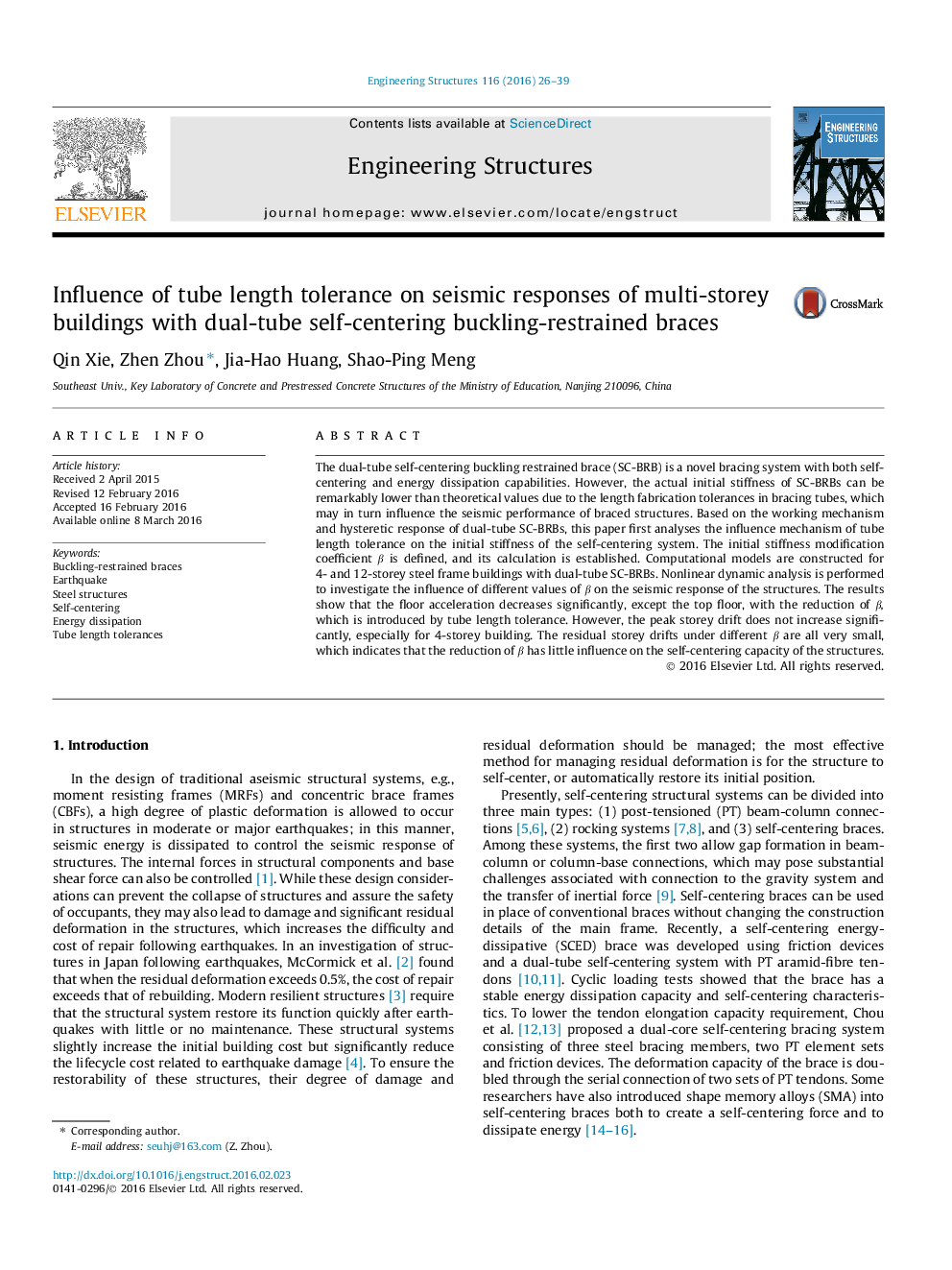| Article ID | Journal | Published Year | Pages | File Type |
|---|---|---|---|---|
| 265791 | Engineering Structures | 2016 | 14 Pages |
•The tube length tolerance will reduce the initial stiffness of dual-tube SC-BRB.•The decrease in the initial stiffness of dual-tube SC-BRBs will lead to an increase in the peak storey drift in the structures.•The decrease in the initial stiffness of dual-tube SC-BRBs will not influence the self-centering capacity or weak floor effect of the structures.•The decrease in the initial stiffness of dual-tube SC-BRBs will lead to a remarkable reduction in the peak floor acceleration in the structures.
The dual-tube self-centering buckling restrained brace (SC-BRB) is a novel bracing system with both self-centering and energy dissipation capabilities. However, the actual initial stiffness of SC-BRBs can be remarkably lower than theoretical values due to the length fabrication tolerances in bracing tubes, which may in turn influence the seismic performance of braced structures. Based on the working mechanism and hysteretic response of dual-tube SC-BRBs, this paper first analyses the influence mechanism of tube length tolerance on the initial stiffness of the self-centering system. The initial stiffness modification coefficient β is defined, and its calculation is established. Computational models are constructed for 4- and 12-storey steel frame buildings with dual-tube SC-BRBs. Nonlinear dynamic analysis is performed to investigate the influence of different values of β on the seismic response of the structures. The results show that the floor acceleration decreases significantly, except the top floor, with the reduction of β, which is introduced by tube length tolerance. However, the peak storey drift does not increase significantly, especially for 4-storey building. The residual storey drifts under different β are all very small, which indicates that the reduction of β has little influence on the self-centering capacity of the structures.
